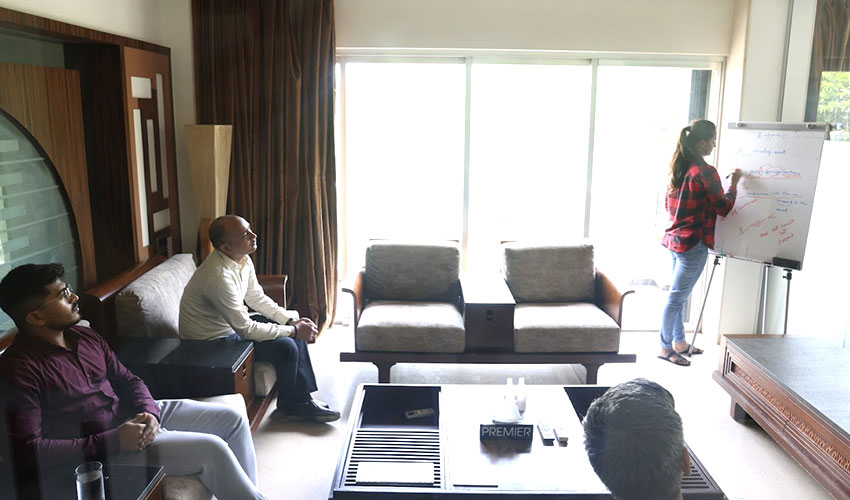- Mumbai, New Delhi, Bangalore
- (+91) 81518 30000
- WhatsApp Now
- contact@vedawellnessworld.com
Rehab or Rehabilitation, is a vital aspect of healthcare, encompassing a range of specialized programs and therapies aimed at restoring individuals to optimal physical, mental, and emotional function. With a rich historical background and evolving practices, rehabilitation plays a crucial role in improving the quality of life for individuals facing various challenges such as injuries, disabilities, or chronic conditions. This article provides an overview of rehabilitation, exploring different types of programs, the benefits it offers, key components of a successful rehabilitation plan, as well as emerging trends and technological advancements shaping the future of rehabilitation practices.
Rehabilitation is like a makeover for your body – helping you recover and improve after injury, illness, or surgery. It’s basically a personal trainer for your health.
Rehabilitation is the process of restoring someone to their former glory – well, maybe even better than before. It involves therapy, exercise, and support to get you back on your feet and feeling fabulous.
Rehabilitation has been around forever – okay, maybe not that long, but for centuries. From ancient methods to modern techniques, the goal has always been the same: to help people get back to their best selves. —
There’s a whole buffet of rehab programs to choose from, each targeting specific areas of improvement. It’s like a health spa menu, but instead of massages, you get physical, occupational, and speech therapies.
Think of physical therapy as gym time with a purpose. It’s all about getting your body moving, building strength, and increasing flexibility – basically, helping you.
Occupational therapy focuses on helping you do the things you need and love to do in your daily life. It’s like having a personal coach for your daily routines, making sure you can get back to cooking, working, and playing like a pro.
Speech and language therapy is like a tune-up for your communication skills. Whether it’s trouble talking, understanding, or swallowing, these therapists are like the mechanics for your mouth and brain, making sure everything runs smoothly.
Rehabilitation isn’t just about getting back on your feet – it’s about strutting down the runway of life like a superstar. From physical gains to overall well-being, the perks are endless.
Rehabilitation helps you regain strength, mobility, and coordination, turning you into a lean, mean, functional machine. Say goodbye to limitations and hello to a body that’s ready to take on the world.
By focusing on both body and mind, rehabilitation boosts your confidence, independence, and overall happiness. It’s like hitting the jackpot of well-being – feeling good inside and out. —
A successful rehabilitation plan is like a recipe for awesomeness – carefully crafted, personalized, and guaranteed to make you shine brighter than a diamond.

First things first – a thorough assessment helps pinpoint your strengths and challenges, setting the stage for your comeback story. Together with your team, you’ll outline goals that are like beacons guiding you towards success.
No cookie-cutter solutions here – your treatment plan is as unique as you are. Tailored exercises, therapies, and strategies work together to address your specific needs and pave the way for a comeback that’s all your own.
When it comes to rehabilitation, getting patients to stick to their treatment plans can be as challenging as finding matching socks in a dark laundry room. From conveniently forgetting their exercises to creatively interpreting “take two pills daily,” patient compliance is a hurdle healthcare providers often face.
Dreams of a fully-stocked rehab center complete with futuristic gadgets and an army of therapists might meet the harsh reality of budget constraints and scarcity of resources. From limited equipment to staffing shortages, navigating these limitations can feel like trying to parallel park a bus in rush hour traffic.
Picture this: receiving rehab guidance from the comfort of your living room, all while wearing your favorite fuzzy slippers. Telemedicine and remote monitoring are revolutionizing the rehab game by allowing patients to connect with their providers virtually, making healthcare a whole lot more accessible and convenient.
Gone are the days of solo acts in healthcare. Enter the era of interdisciplinary care teams, where specialists from different fields come together like a healthcare Avengers squad to provide comprehensive and holistic care. It’s like assembling a team of superheroes, but with stethoscopes and lab coats.

Step into the world of virtual reality therapy, where rehab meets gaming in the ultimate mashup. By immersing patients in engaging virtual environments, this technology not only makes rehab sessions more fun but also helps improve outcomes by turning exercises into adventures.
Who needs a personal trainer when you have a smartphone? With mobile applications for home exercise programs, patients can access customized workouts, track their progress, and receive motivational reminders, all from the palm of their hand. It’s like having a mini rehab coach in your pocket.
As we gaze into the crystal ball of healthcare, the future of rehabilitation looks promising, albeit with a tech-savvy twist. With innovations like telemedicine, virtual reality therapy, and mobile apps taking center stage, the rehab landscape is evolving to be more accessible, engaging, and effective than ever before. So, here’s to a future where rehab is not just about recovery but also about reimagining what’s possible. Cheers to the next chapter in the book of rehabilitation!In conclusion, rehabilitation continues to be a cornerstone of healthcare, offering hope and support to individuals on their journey towards recovery and improved well-being. By recognizing the importance of personalized care, innovative technologies, and interdisciplinary collaboration, the future of rehabilitation holds promising opportunities for enhancing outcomes and empowering individuals to lead fulfilling lives.